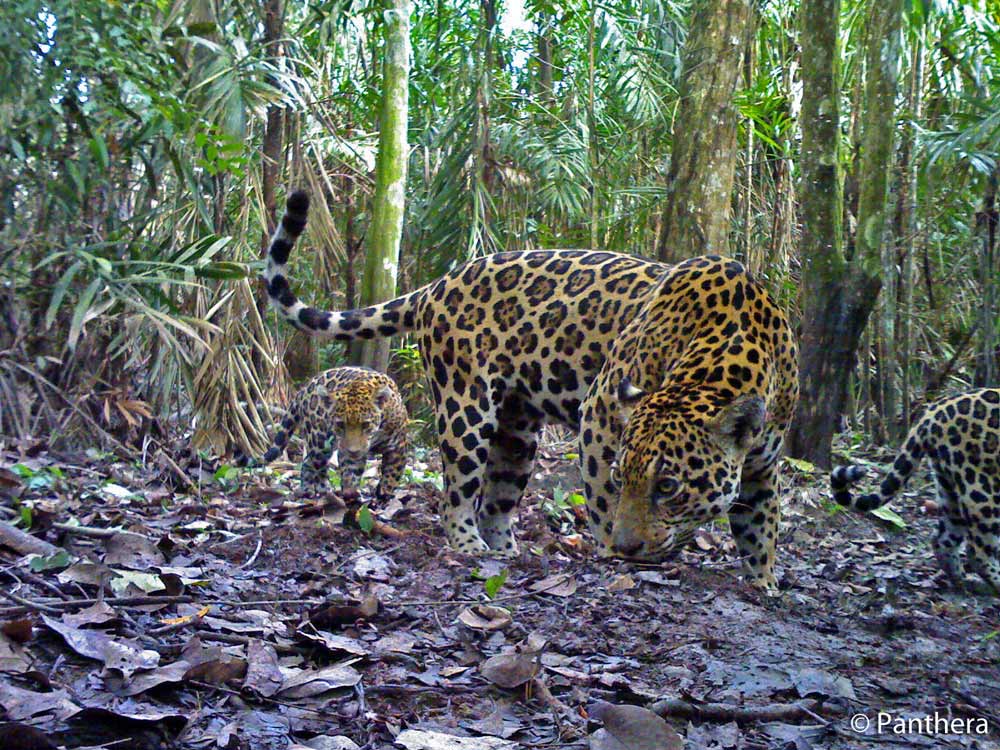Rare Photos Reveal Elusive Jaguar Cubs on Oil Plantation


For the first time, cameras have documented wild jaguars with cubs in an oil palm plantation in Colombia, a conservation organization announced today (June 6). This is significant for conservationists who hope to protect the wild cats' populations because it indicates jaguars are willing to enter the plantations, which can break up their natural habitat.
The wild cat conservation organization Panthera set up hidden cameras, called camera traps, in an oil palm plantation in Colombia's Magdalena River valley. They ended up capturing photos of two male jaguars and a female jaguar with cubs, as well as a video of a male jaguar. [Big Cats: Photos Reveal Elusive Jaguars]
The plantation is adjacent to a protected area with some natural habitat, according to a news release issued by Panthera. This is a good sign for the organization's goal of creating a corridor that links core jaguar populations within the cats' range from Mexico to Argentina. Linking the populations is important for conservation, because it prevents populations from becoming isolated and inbred.
"Given the extensive amount of jaguar habitat overtaken by oil palm plantations in Colombia, we hope that certain plantations can be part of the Jaguar Corridor, enabling jaguars to reach areas with little or no human disturbances," Esteban Payan, director of Panthera's Northern South America Jaguar Program, said in a statement.
It was already known that jaguars can move across human-dominated landscapes through forests along river or stream banks, or using road underpasses. But these photos and video are the first photographic proof that jaguars entered oil palm developments in this region, said Payan of Panthera (www.panthera.org).
Oil palm produces a vegetable oil that is used in a variety of products, including food, cosmetics and biofuels. It is a rapidly expanding crop in equatorial regions. To create the plantations to grow it, large tracts of forest are cleared.
In Indonesia, tigers appear to avoid the plantations, which become barriers restricting their gene flow, and as a result, the health of their populations, according to Panthera.
Get the world’s most fascinating discoveries delivered straight to your inbox.
"Our data suggest that plantations can be part of a landscape mosaic that jaguars will use. But careful planning that avoids large-scale replacement of forest with huge palm oil areas will be essential if we want to avoid the kind of isolation that tigers now suffer," Howard Quigley, executive director of Panthera's Jaguar Program, said in a statement.
Camera traps can use a heat sensor, which, when tripped by an animal, activates a camera. This system has been used to document jaguars and other animals living in Ecuadorian forest as well.
You can follow LiveScience senior writer Wynne Parry on Twitter @Wynne_Parry. Follow LiveScience for the latest in science news and discoveries on Twitter @livescience and on Facebook.




